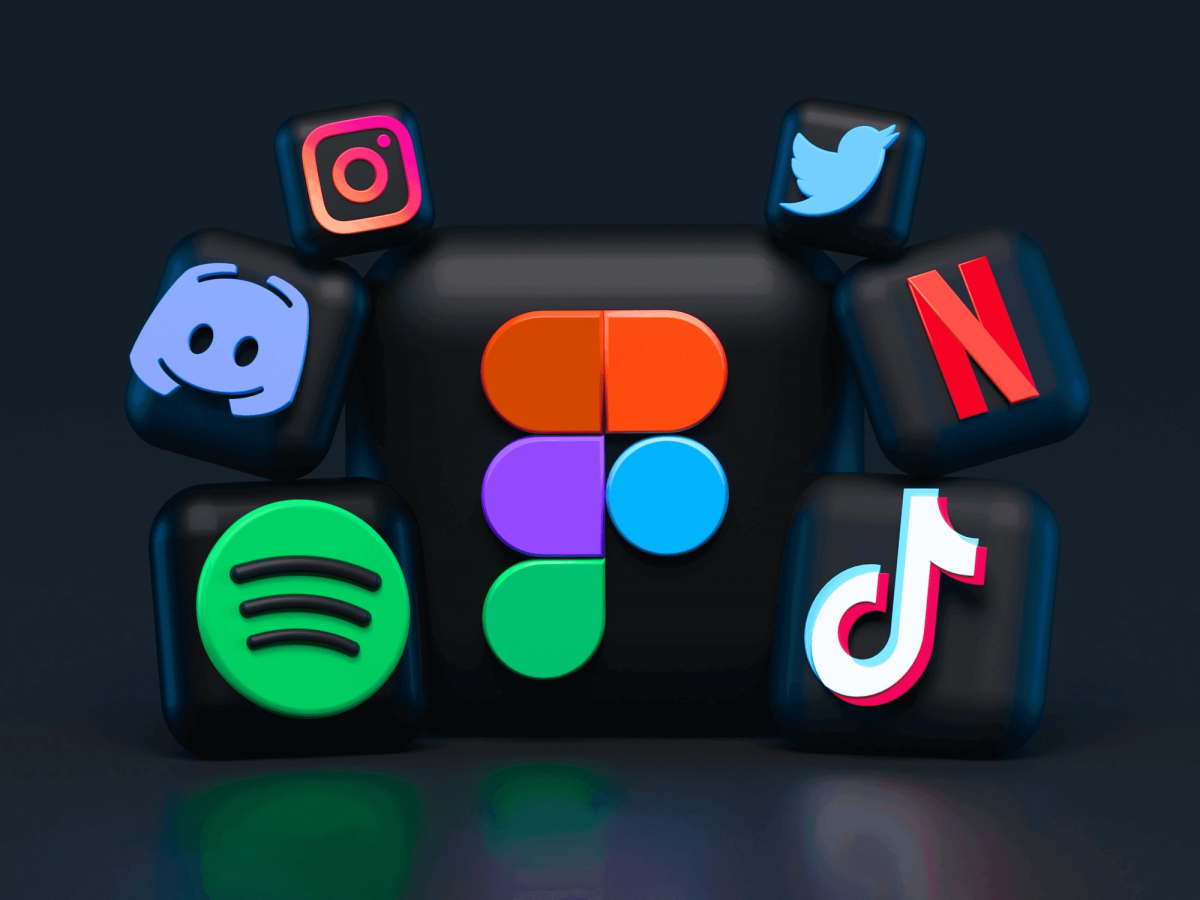What is User Generated Content? A Comprehensive Guide to UGC

The power of content has transcended traditional mediums, giving rise to a new kind of marketing—User Generated Content (UGC).
Quick Summary
User Generated Content (UGC) has emerged as a crucial marketing tool for brands, fostering genuine connections with audiences through organic and authentic content. Unlike traditional marketing, UGC is driven by satisfied customers sharing experiences via reviews, social media, or blogs. Its effectiveness lies in enhancing brand awareness, establishing trust, and building a community around the brand. As a result, UGC significantly influences consumer behavior and acts as a powerful driver for e
UGC emerges as a potent tool for brands to foster a genuine connection with their audience.
Unlike brand-specific in-house content, UGC is organic, authentic, and created by individuals who interact with the brand out of their interest.
Ready to Grow Your Business?
Get a free consultation and custom strategy tailored to your goals.
UGC takes many forms; it could be a glowing review on a company's Facebook page, a blog post detailing a customer's experience with the product, or even a creative video showcasing the product's features shared on social media.
The essence of a UGC campaign lies in its authenticity, by satisfied customers or followers who have interacted with the brand in some capacity.
This form of marketing is invaluable in building brand awareness and establishing trust among future customers.
Moreover, UGC provides a platform for existing customers to express their content creatively, sharing their unique experiences and perspectives, which enriches the brand's narrative.
It's a symbiotic relationship where the brand gets authentic content to promote, and the users get a platform to share their experiences and opinions.
The beauty of UGC is that it not only helps promote the brand but also engages the audience meaningfully, making them feel a part of the brand's journey.
This engagement is crucial in building a loyal customer base and fostering a community around the brand. UGC allows brands to showcase relatable product usage examples to potential customers.
In this comprehensive guide, we will delve deeper into the nuances of UGC, exploring its benefits, how to encourage and leverage it, and analyzing its impact on modern marketing strategies.
Defining UGC: Unveiling the UGC Meaning Behind User-Generated Content

UGC encompasses a wide range of content types, all created and shared by users.
Unlike brand-created Content, UGC is not paid for by the brand, making it a cost-effective and authentic form of endorsement.
The UGC meaning extends to any form of content, be it text, images, videos, reviews, or podcasts, created by individuals not professionally affiliated with the brand.
Brand values are reflected when content is shared on social media, forums, or user-generated content platforms.
The Evolution of UGC: From Forums to Social Media Platforms
The concept of UGC is familiar; it has evolved from forums and review sites to modern social platforms like Instagram, Facebook, and TikTok (X).
In the early days of the internet, forums and review sites were the primary platforms where user-generated content was shared.
People would share their experiences, reviews, and advice on these platforms. With the advent of social media, the landscape changed dramatically.
Social media users can now share visually engaging content with a broader audience.
The ease of sharing on social media has significantly amplified the volume and impact of UGC, making it a crucial part of modern marketing strategies.
Types of User-Generated Content: A Broad Spectrum
User-generated content can be categorized into several types, each with its unique characteristics and benefits:
- Reviews and Testimonials:These are often the most straightforward forms of UGC. Customers share experiences about a product or service.
- Social Media Posts:Users share posts about a brand or its products on various social media channels, often accompanied by images or videos.
- Blog Posts:Individuals may write blog posts about their experiences with a brand, providing a more in-depth analysis.
- Videos:From unboxing videos to tutorials and reviews, video content is a highly engaging UGC.
- Forums and Q&A Sites:Users share advice reviews and ask questions on forums and Q&A sites like Reddit or Quora.
- Photos and Images:Visual Content users share on platforms like Instagram or Pinterest.
- User Polls and Surveys:Collecting customer opinions and feedback through polls and surveys.
Each type of user generated content serves a different purpose and can be leveraged in various ways to enhance a brand's marketing efforts.
For instance, reviews and testimonials can build trust, while social media posts and videos can boost engagement and provide valuable user generated content that resonates with potential customers.
The diverse nature of UGC provides a rich tapestry of content that brands can utilize to foster a genuine connection with their audience, making it an indispensable tool in a modern marketing strategy.
The Significance of UGC: Why is User-Generated Content Important?
User-generated Content (UGC) has emerged as a cornerstone of modern marketing strategies, especially in the digital realm.
The importance of UGC lies in its authenticity and the genuine engagement it fosters between brands and their audiences.
Here are several reasons why user generated content is essential:
- Authenticity:UGC is perceived as more authentic compared to brand-generated content. Honest feedback, opinions, and creative expressions from actual users resonate more with potential customers.
- Trust and Credibility:Consumers trust content created by their peers more than traditional advertising. UGC acts as social proof, validating the brand's claims.
- Engagement:UGC fosters online engagement and community building through social media.
- SEO Benefits:UGC can improve SEO rankings by generating fresh, relevant content and helping generate backlinks to the brand's website.
- Cost-Effectiveness:It's a cost-effective way to generate content for marketing campaigns, saving brands time and resources.
- Enhanced Customer Experience:By showcasing real user generated content examples on product pages or social channels, brands can enhance the online shopping experience.
- Increased Conversion Rates:UGC can significantly improve conversion rates as it helps reduce customers' uncertainties regarding a product or service.
UGC Vs. Influencer Content: Understanding the Distinctions
While individuals outside the brand generate both UGC and influencer content, there are distinct differences between the two:
- Nature of Content:UGC is organic and unsolicited, while influencer marketing content is often sponsored or paid for by the brand.
- Creator:UGC is user-generated content, while influencer content is created by paid social media personalities.
- Objective:The primary purpose of UGC is to share personal experiences and opinions, while influencer content aims to promote the brand and drive sales through influencer marketing.
- Control:Brands have less control over UGC as it's organic and spontaneous, while they may have more control over the narrative with influencer content.
The Role of UGC Creators: Who Are They and What Do They Do?
UGC creators create content about a brand or its products/services without any formal affiliation or compensation from the brand.
They could be customers, brand advocates, or even critics. Their primary role is to share their genuine experiences, opinions, or creative expressions related to the brand.
They help build brand awareness and loyalty and provide valuable feedback that can be instrumental for brands to improve their offerings.
UGC creators contribute to the brand's community by engaging in discussions, answering queries, and providing a real-world perspective to potential customers.
Monetizing UGC: Do UGC Creators Make Money?
Monetizing UGC can be complex as it largely depends on the platform and the individual creator's following.
Some UGC creators may monetize their content through affiliate marketing, sponsored posts, or selling.
Platforms like YouTube and TikTok have partner programs that allow creators to earn money from ads displayed on their content.
However, not all UGC creators are in it for monetary gains; many are motivated by the community, the engagement, or simply the joy of creating content.
Brands sometimes collaborate with UGC creators for sponsored content, turning user-created content into a more formalized marketing channel.
This monetization aspect blurs the line between UGC and influencer content, showcasing the diverse ways user-generated content can be leveraged in the digital age.
UGC on Different Platforms: TikTok, Instagram, and Beyond

User-generated Content thrives on online platforms where users can share their experiences, reviews, and creative works.
Here's how UGC manifests on different platforms:
- TikTok:Known for its short-form videos, TikTok is a haven for UGC. Users create content based on trends, challenges, or brand-specific themes. Brands can leverage user-generated Content on TikTok by completing challenges or using branded hashtags to encourage user participation.
- Instagram:With its visually driven interface, Instagram is ideal for sharing user generated photos, videos, and stories. Brands often use hashtags to prompt users to share experiences with their products or services.
- Facebook:Users share reviews, photos, and experiences on a brand's page or within community groups. Facebook also provides a platform for customer engagement through UGC through comments, shares, and likes.
- YouTube:From reviews to unboxing videos and tutorials, YouTube is a significant platform for long-form UGC.
- Twitter:Users share real-time experiences and opinions on Twitter, making it a dynamic platform for UGC.
- Pinterest:A platform for sharing ideas and inspirations, Pinterest allows users to discover and share content through images and videos related to their interests.
Each social platform has unique features that can be leveraged to encourage and share user generated content, forming a crucial part of a brand's marketing strategy across multiple platforms.
Creating Valuable User-Generated Content: Tips and Tricks
Creating valuable UGC requires a blend of authenticity, creativity, and relevance.
Here are some tips to ensure the creation of relevant user generated content:
- Be Authentic:Authenticity is the cornerstone of valuable UGC. Users should share their genuine experiences and opinions.
- Follow Guidelines:Adhering to the guidelines of the platform you are posting on ensures your content reaches a broader audience.
- Engage with Others:Engaging with other users, responding to comments, and participating in community discussions enhance the value of your UGC.
- Use Hashtags Wisely:Incorporating relevant and trending hashtags can increase the visibility of your UGC.
- Quality Over Quantity:Creating fewer high-quality posts than numerous low-quality ones is better.
- Tell a Story:UGC that tells a story or solves a problem tends to resonate more with audiences.
Encouraging UGC: Strategies for Brands to Foster Consumer-Generated Content
For brands, encouraging UGC is a way to foster community, gain valuable insights, and enhance their marketing efforts.
Here are some strategies to encourage UGC:
- Create Engaging Campaigns:Launching campaigns that prompt users to share their experiences or creativity can generate a buzz and a plethora of UGCs.
- Use Branded Hashtags:Encourage users to share content under a branded hashtag, which organizes the UGC and creates a community around your brand.
- Feature User Content:Showcasing user generated content on your official social channels or website can motivate others to share their experiences.
- Run Contests and Giveaways:These incentives can drive user engagement and generate substantial UGC.
- Provide Clear Guidelines:Clear guidelines and prompts facilitate content creation and sharing.
UGC Marketing: Leveraging User-Generated Content for Brand Promotion
UGC Marketing is about leveraging the authentic content users create to promote a brand. It's a powerful way to build trust, raise awareness, and drive conversions.
Here's how to leverage UGC in your marketing:
- Content Curation:Collect and curate authentic user generated content that aligns with your brand values and marketing goals.
- Social Proof:Using User-Generated Content (UGC) as proof on service pages, social media, and other marketing channels can establish trust and influence purchasing decisions.
- Community Building:Foster a community of loyal customers by engaging with UGC creators, responding to UGC, and showcasing users content.
Ready to Grow Your Business?
Get a free consultation and custom strategy tailored to your goals.
- UGC Campaigns:Encourage brand loyalty and buzz by launching UGC campaigns to generate user-created content.
- Cross-Promotion:Maximize the reach and impact of your UGC by sharing it across social channels, websites, and email marketing.
Enrich your content strategy and build a stronger, engaged community by integrating UGC into your marketing.
Is UGC Organic Marketing? Exploring the Authenticity
User-generated content (UGC) is often seen as a form of organic marketing due to its authentic and unpaid nature.
Unlike traditional advertising or influencer marketing, where brands pay for promotion, users voluntarily create and share UGC based on their genuine experiences and opinions.
This authenticity often leads to higher trust among social media users, making UGC a powerful organic marketing tool.
Here are some points that highlight the organic aspect of UGC:
- Authenticity:UGC is authentic by nature as it's created by real users sharing real experiences, which often influences brand loyalty.
- Trust:Consumers tend to trust content created by peers more than brand-generated content, making UGC a trusted source of information that can significantly influence purchasing decisions.
- Community Engagement:UGC fosters community and engagement on social platforms, allowing brands to build organic relationships with their audience.
- SEO Benefits:UGC can also contribute to organic web traffic through SEO benefits such as user reviews, and other forms of UGC can improve search engine rankings.
UGC in Email Marketing: A New Horizon
Incorporating User-Generated Content in email campaigns can add a layer of personalization and authenticity that other campaigns might need more.
Here's how one can utilize UGC in email marketing:
- Testimonials and Reviews:Including online reviews and testimonials in emails can build trust and provide social proof.
- User Photos:Featuring customer photos or videos using your products can create a visual appeal and show real-life usage.
- Content Sharing:Motivate users to share their content and experiences, which can be featured in future email campaigns.
- Promotions:Promote UGC contests or campaigns within emails to encourage more participation and content creation.
Using user-generated content in email marketing strengthens brand-customer connection.
Examples of Effective UGC: Learning from Success Stories
Examining successful UGC campaigns can provide valuable insights into what works well in user generated content marketing.
Here are some anonymized examples of influential UGC:
- UGC Contest:A brand launched a UGC contest encouraging users to share creative photos using their products. The campaign generated thousands of user submissions and significantly increased brand engagement on social media.
- Review Campaign:Another brand encouraged customers to leave online reviews in exchange for a chance to win a prize. This campaign generated valuable reviews and created a buzz around the brand.
- Hashtag Campaign:A brand created a unique hashtag and encouraged users to share their experiences using it. This campaign generated a massive amount of user generated content, creating a community of brand advocates.
These examples demonstrate the potential of UGC in creating engaging and effective campaigns.
The Impact of UGC on Brand Perception and Customer Trust

The impact of User-Generated Content on brand perception and customer trust is profound.
Here's how UGC influences brand perception:
- Authenticity:UGC provides an authentic glimpse into real user experiences, which can significantly enhance brand trust.
- Social Proof:Seeing others use and endorse a product or service provides social proof, which can influence purchasing decisions.
- Community Building:UGC fosters a sense of community among users, which can lead to a more favorable brand perception and stronger brand-consumer relationships.
- Word of Mouth:UGC is the digital age's word-of-mouth marketing, where users share their positive experiences and recommend brands to their peers.
By encouraging and showcasing UGC, brands can significantly enhance their brand perception and build a loyal community of customers.
Legal Aspects of UGC: Ensuring Compliance and Protecting Rights
Navigating the legal landscape of User-Generated Content is crucial for brands and content creators.
Here are some fundamental legal considerations:
- Copyright Laws:Understanding who owns the copyright to the content generated is essential. Usually, the creator holds the copyright, but permissions are needed to use the content in campaigns.
- Permissions:Always obtain explicit consent from the creators before using their content, primarily if it will be used commercially.
- Terms of Use:Establish clear terms of use on your user generated content platform that explains how your brand will use UGC.
- Privacy Laws:Ensure compliance with privacy laws, especially when collecting user generated content that may contain personal information.
- Trademark Infringement:Be cautious of UGC that may infringe on other trademarks or copyrighted material.
Understanding and adhering to these legal aspects can protect your brand from potential legal issues and ensure a respectful and lawful UGC strategy.
UGC Content Structure: Crafting Content that Resonates
Creating engaging and User-Generated Content requires a thoughtful approach to content structure.
Here are some tips:
- Authenticity:Maintain authenticity by encouraging users to share their genuine experiences and opinions.
- Clarity:Ensure the UGC is clear, concise, and easy to understand, regardless of its format.
- Visual Appeal:Visual UGC content, like photos and videos, should be visually appealing and high-quality to capture attention.
- Relevance:Creating a genuine connection requires relevant content for your audience and brand.
- Engagement:Encourage engagement by asking questions, sparking discussions, or creating content that evokes emotions.
A well-structured UGC can significantly enhance the effectiveness of your marketing campaign and foster a deeper connection with your audience.
How to Generate UGC: Encouraging Audience Participation

Generating a steady stream of UGC requires a proactive approach to encourage audience participation.
Here are some strategies:
- Contests and Giveaways:Launch contests or giveaways that prompt users to create and share content.
- Hashtags:Create unique branded hashtags that make it easy for users to share their user-generated posts and for you to collect and display UGC.
- Incentives:Encourage UGC creation by offering incentives such as discounts or featuring user content on social media.
- Community Engagement:Engage with your community by responding to UGC, sharing it on your platforms, and appreciating the effort of your audience.
By implementing these strategies, you can stimulate the creation of UGC and build a vibrant community around your brand.
Utilizing UGC on Social Media: A Step-by-Step Guide
Leveraging User-Generated Content on social media can significantly boost your brand's online presence.
Here's a step-by-step guide on how to do it:
- Collecting UGC:Use tools and platforms to collect UGC, track branded hashtags, and manage permissions.
- Curating Content:Curate the collected content to ensure it aligns with your brand values and marketing goals.
- Sharing UGC:Share curated UGC across your social media platforms to engage your audience and showcase the real-world use of your products or services.
- Engaging with Creators:Engage with the creators by thanking them, commenting on their posts, and building relationships.
- Measuring Impact:Use analytics tools to measure the impact of UGC on your social media channels, including engagement rates, web traffic, and conversion rates.
Following this guide can help you effectively utilize UGC on social media, enhancing your brand's authenticity and engagement with your audience.
UGC Marketing Campaigns: Planning and Execution

Creating a successful User Generated Content campaign is an art that requires a blend of creativity, strategic planning, and effective execution.
Here's a deeper dive into the steps involved in orchestrating a successful UGC campaign:
- Objective Setting:Clearly defining the objectives is the cornerstone of any user generated content campaign. Whether it's boosting brand awareness, driving traffic, or enhancing engagement, knowing your goals will guide the campaign's direction.
- Platform Selection:Choose the social platforms that resonate with your target audience. Each forum has unique features and audience demographics, making it crucial to select the right ones for your campaign.
- Hashtag Creation:A catchy, brand-centric hashtag can create a buzz and motivate users to share their content. It acts as a thread that ties all the UGC content together.
- Content Guidelines:Clear guidelines can maintain consistent quality UGC.
- Promotion:Promote the campaign across various channels to ensure maximum participation. Use the website, email marketing, and social media platforms to promote your message effectively. It's an intelligent way to reach out to your target audience.
- Content Curation and Display:Collect and curate the UGC, ensuring it aligns with your brand ethos. Utilize UGC display tools to showcase the collected content on social media, your website, or other digital platforms.
Ready to Grow Your Business?
Get a free consultation and custom strategy tailored to your goals.
- Monitoring and Moderation:Keep a close eye on the generated content to ensure it adheres to guidelines and represents your brand positively.
- Measurement and Analysis:Utilize analytics tools to measure the campaign's success against the set objectives. Analyzing data points like engagement, reach, and conversions will provide insights into the campaign's effectiveness.
Measuring the Success of UGC Campaigns: Key Performance Indicators
Measuring the success of your UGC campaigns is crucial for understanding their impact and optimizing future campaigns.
Here are some additional Key Performance Indicators (KPIs) to consider:
- User Activity:Track the number of posts, shares, and interactions to gauge user activity and engagement.
- Sentiment Analysis:Utilize sentiment analysis tools to understand the audience's perception and sentiment towards your brand through the UGC.
- Referral Traffic:Monitor the traffic from the UGC campaign to your website or landing pages.
- Lead Generation:Track the number of campaign leads and their conversion to customers.
- Content Longevity:Evaluate how long the content continues to generate engagement and traffic after the campaign has ended.
Challenges and Pitfalls in UGC: What to Avoid
Navigating the challenges in UGC campaigns requires a proactive approach.
Here are some additional pitfalls to avoid:
- Over-Promotion:Avoid overly promoting your brand, which can come off as inauthentic. Allow the user generated content to shine and reflect the genuine experiences of your audience.
- Ignoring Negative Feedback:Negative feedback can provide valuable insights. Addressing concerns and being willing to improve can enhance your brand's reputation.
- Failure to Credit Creators:Always credit the original creators when sharing or displaying their content. It's ethical and fosters a positive relationship with your brand loyalists.
UGC and SEO: Boosting Your Online Visibility
Leveraging UGC for SEO is a smart strategy in the digital age.
Here's how to maximize the SEO benefits of user generated content:
- Fresh Content:Search engines love fresh, updated content. UGC provides a continuous stream of new content, which can help improve your site's ranking.
- Keyword Rich:UGC often contains keywords relevant to your brand or products, which can help improve your site's keyword ranking.
- Backlinks:Encourage users to share their content on their blogs or websites with a link to your site, which can help build valuable backlinks.
- Social Signals:UGC's shares, likes, and comments can act as social signals contributing to your site's SEO.
- Local SEO: For businesses with a local presence, reviews and UGC content on local sites and forums can help boost local SEO.
Integrating user-generated content into your SEO strategy can boost online visibility, drive organic traffic, and improve search engine rankings.
Future Trends: The Evolving Landscape of User-Generated Content

The digital realm and User-Generated Content landscape are ever-evolving.
Here are some trends that are shaping the future of UGC:
- Augmented and Virtual Reality:AR and VR provide new avenues for creating UGC. Users can now create content in a more interactive and immersive environment.
- AI and Machine Learning:These technologies are aiding in collecting user-generated content, analyzing, and sorting through vast amounts of UGC to find the most relevant and engaging content.
- Video Content:The surge in video content continues unabated, with platforms like TikTok leading the charge. UGC videos are taking over social media.
- Ethical UGC:As consumers become more socially conscious, brands must ensure that the UGC they leverage aligns with ethical standards and social responsibilities.
- Employee-Generated Content (EGC):Employee-generated content is gaining traction as a trustworthy form of UGC. Employees acting as brand advocates can provide authentic insights into a company's culture and values.
UGC Tools and Platforms: Streamlining Content Collection and Management
Using the correct tools and platforms is crucial to managing user-generated content effectively.
Here are some resources that can streamline your UGC efforts:
- Content Aggregation Tools:These tools help collect user generated content from varioussocial mediaplatforms, making finding and curating content easier.
- UGC Platforms:Dedicated user generated content platforms provide a centralized place for collecting, managing, and displaying UGC.
- Analytics Tools:Understanding the impact of UGC is crucial. Analytics tools can provide data on engagement, reach, and the effectiveness of your UGC campaigns.
- Rights Management Tools:Ensuring you have the rights to use the collected content is crucial. These tools can help in obtaining permissions and managing requests for UGC.
Case Studies: Analyzing Successful UGC Campaigns
Examining successful UGC campaigns can provide valuable insights into practical strategies and tactics.
Here are a couple of anonymized case studies:
- Brand A:The brand launched a user-generated content campaign to encourage customers to share their experiences with its products. The campaign generated thousands of user submissions, significantly boosting brand engagement and sales.
- Brand B:Created a hashtag challenge on a popular social media platform, which went viral and resulted in a massive increase in followers and brand recognition.
These case studies highlight the potential of well-executed UGC campaigns in driving engagement and achieving marketing goals.
Educating Your Audience: Fostering a Community of UGC Creators
Educating your audience on the meaning of UGC and how to create valuable content is essential for fostering a community of UGC creators.
Here are some strategies:
- Content Creation Workshops:Hosting workshops can help educate your audience on creating high-quality UGC.
- Online Tutorials:Offering online tutorials can increase user generated content.
- UGC Guidelines:Defined guidelines can help maintain quality and consistency in user-generated content.
- Recognition and Rewards:Recognizing and rewarding top UGC creators can motivate others to contribute.
By educating your audience and providing them with the necessary tools and knowledge, you can build a thriving community of UGC creators that can significantly benefit your brand.
The Ethical Dimension of UGC: Balancing Promotion with Authenticity
User-generated content has brought along ethical considerations that brands must navigate.
Here are some key points to consider:
- Authenticity:Authenticity is the cornerstone of UGC. It's essential to ensure that the content reflects real experiences and opinions. Encouraging honest feedback, whether positive or negative, builds trust with your audience.
- Permission:Before using UGC in other marketing campaigns, obtaining permission from the content creators is crucial, which is a legal requirement and an ethical practice that shows respect towards the individuals behind the content.
- Transparency:Being transparent about the use of UGC is vital. If a partnership or sponsorship is involved, disclosing this information is ethically sound and often legally required.
- Misrepresentation:Avoid altering UGC in a way that misrepresents the creator's original intent or message, which includes not taking content out of context or editing it to convey a different message.
- Exploitation:It's essential to avoid exploiting UGC creators, especially when there's a significant power dynamic at play, such as between large media organizations and individual creators.
- Recognition:Providing proper credit and recognition to the creators of the UGC is a respectful and ethical practice.
By adhering to ethical practices, brands can foster a positive environment for UGC creation and utilization, ensuring a win-win scenario for both the brand and the content creators.
Conclusion: Harnessing the Full Potential of User-Generated Content for Your Brand

User-generated content has the potential to impact brands that engage with it responsibly and effectively strongly.
It's a powerful tool that can significantly enhance brand loyalty, client engagement, and overall brand perception.
By understanding the dynamics of UGC, respecting the creators, and leveraging the right tools and strategies, brands can harness the full potential of UGC.
Based on the guide, here are the main points you should remember:
Understanding UGC:Grasping the meaning of UGC, its various forms, and its significance is the first step towards leveraging it for your brand.
Engaging with UGC Creators:Building relationships with UGC creators, whether customers, employees, or influencers, is crucial for generating authentic and brand-specific content.
This engagement yields brand-specific content created by those who have a genuine connection with the brand and encourages a culture where customers and followers feel valued enough to create their own content. In a similar vein, engaging with influencers can also significantly boost brand visibility and authenticity, as explored in this comprehensive guide on influencer marketing.
Leveraging Tools and Platforms:Utilizing the right tools and platforms can streamline collecting, managing, and displaying UGC, making it a more manageable and effective marketing strategy.
Navigating Ethical Considerations:Adhering to ethical practices ensures a respectful and mutually beneficial relationship between brands and UGC creators.
Measuring and Analyzing:Continuously measuring the impact of UGC and analyzing the data to understand its effectiveness is crucial for refining your UGC strategy.
Adapting to Future Trends:Staying updated with the evolving landscape of UGC will help adjust your strategy to remain adequate and relevant.
By embracing UGC and integrating it into your marketing strategy, you can build a more authentic, engaging, and customer-centric brand.
The journey towards harnessing the full potential of User-Generated Content for your brand begins with a single step: encouraging your audience to share their experiences and stories with your brand, thereby creating a repository of their own content that resonates with potential customers and enhances brand loyalty.
Written by Maria Kanic
Maria Kanic is a Social Media Manager at AMW with expertise in digital campaigns, social media strategy, and brand communications.
Ready to Grow Your Business?
Get a free consultation and custom strategy tailored to your goals.
Frequently Asked Questions
What is the difference between user-generated content and influencer marketing?
User-generated content (UGC) is organic, unpaid content created by customers sharing genuine experiences, while influencer marketing involves paid partnerships with social media personalities. UGC is spontaneous and authentic, created without brand compensation, whereas influencer content is strategically planned and sponsored. Brands have less control over UGC messaging but gain higher authenticity and trust. UGC creators are typically regular customers, while influencers are professional content creators with established followings who create promotional content for compensation.
What are the main types of user-generated content for businesses?
The primary types of UGC include customer reviews and testimonials, social media posts with brand mentions, blog posts detailing product experiences, unboxing and tutorial videos, forum discussions and Q&A content, photos shared on platforms like Instagram and Pinterest, and user polls or surveys. Each type serves different marketing purposes: reviews build trust, social posts boost engagement, videos demonstrate product usage, and photos provide visual social proof that resonates with potential customers across various platforms.
How does user-generated content improve SEO and search rankings?
User-generated content improves SEO by generating fresh, relevant content that search engines favor for indexing. UGC creates natural keyword variations and long-tail search terms that customers actually use. Reviews and testimonials provide unique content that increases page relevance and dwell time. Social media UGC can generate valuable backlinks to brand websites. Additionally, UGC increases user engagement metrics like time on page and reduces bounce rates, which are positive ranking signals that help improve overall search visibility.
Why is user-generated content more trustworthy than brand marketing?
User-generated content is perceived as more trustworthy because it comes from real customers without financial incentives to promote the brand. Consumers view UGC as authentic peer recommendations rather than paid advertisements. UGC acts as social proof, validating brand claims through genuine user experiences. Studies show that 92% of consumers trust recommendations from other users over branded content. This authenticity stems from UGC being unsolicited, honest feedback that includes both positive and negative aspects of customer experiences.
How can businesses encourage customers to create user-generated content?
Businesses can encourage UGC by creating branded hashtags and running social media contests, offering incentives like discounts or product giveaways for content creation, featuring customer content on official brand channels, making products highly shareable or 'Instagrammable,' actively engaging with and responding to user posts, creating clear calls-to-action asking for reviews or social shares, and building community platforms where customers can easily share experiences. The key is making content creation feel rewarding and appreciated rather than forced or transactional.
What are the business benefits of using user-generated content marketing?
UGC marketing provides significant cost savings by reducing content creation expenses while delivering higher engagement rates than traditional advertising. It builds authentic brand trust and credibility through peer recommendations, leading to increased conversion rates and sales. UGC enhances SEO performance, creates stronger customer communities, and provides valuable market insights through customer feedback. Additionally, UGC serves as social proof that reduces purchase hesitation, extends brand reach organically, and creates a continuous content stream that keeps marketing campaigns fresh and relevant.
Can user-generated content creators make money from their content?
Yes, UGC creators can monetize their content through various methods including affiliate marketing commissions, sponsored collaborations with brands, platform partner programs on YouTube and TikTok, selling their own products or services, and creating paid content partnerships. However, monetization depends on factors like follower count, engagement rates, and niche expertise. Many UGC creators start organically sharing experiences and later develop revenue streams, while others create content purely for community engagement without monetary goals. Success requires consistent, quality content creation and audience building.
Related Articles

Innovative Ways to Integrate UGC in Your Next Marketing Campaign
User-generated content can be a powerful implement for marketers to build authentic connections with their audience. UGC can amplify your brand's reach and build trust and credibility among potenti

A Guide to Choosing the Right User-Generated Content (UGC) Agency
The concept of a User-Generated Content (UGC) agency is great for brands looking to forge deeper connections with their audience. But what exactly is a UGC agency? Simply put, it's a specializ

How to Leverage Influencer Marketing to Grow Your Audience
In today's digital landscape, influencer marketing has emerged as a powerful tool for brands seeking to expand their reach and engage with new audiences. By partnering with influential content creator